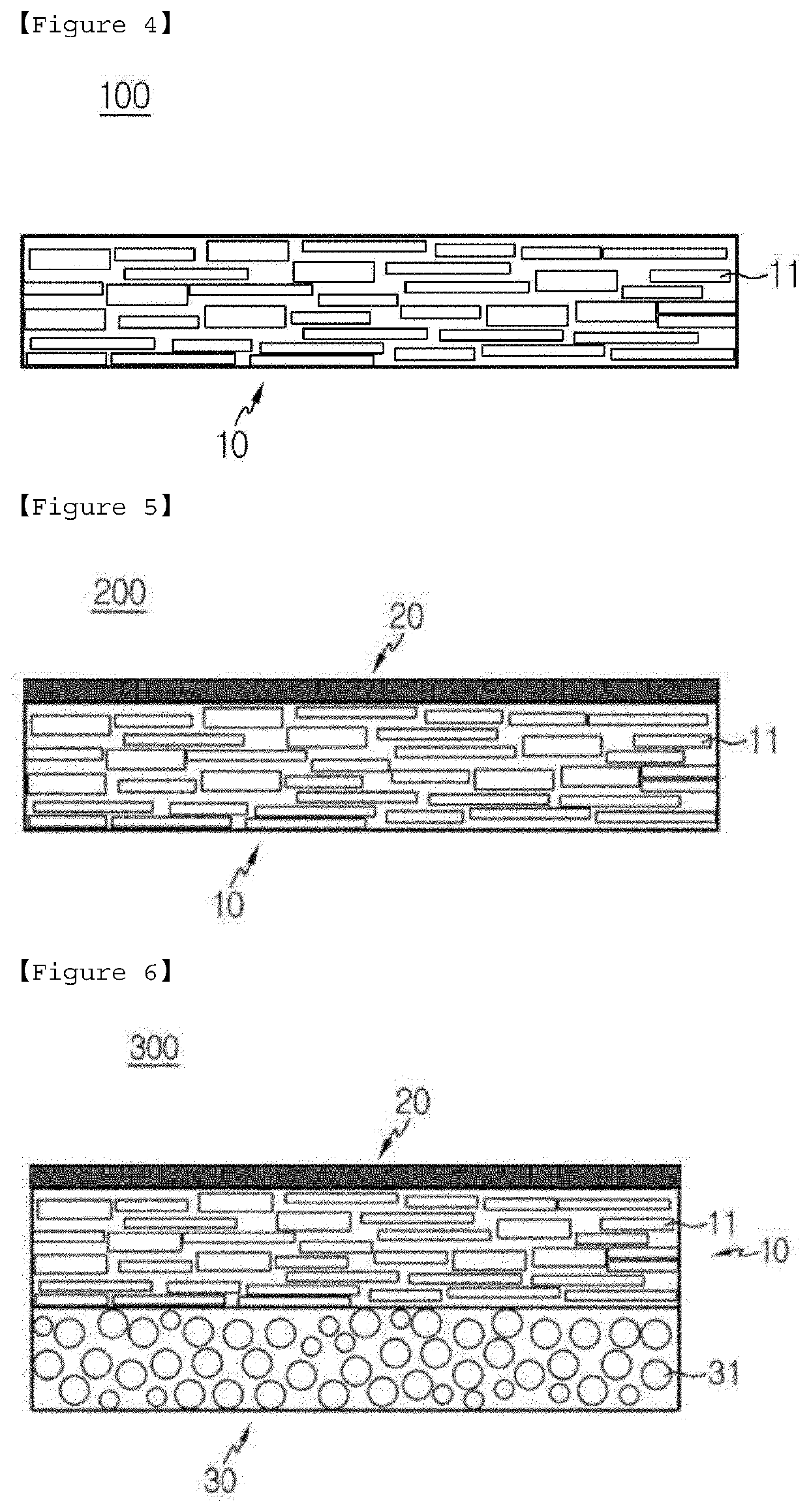Porous separator and lithium secondary battery comprising same
a separator and lithium secondary technology, applied in the field of porous separator and lithium secondary batteries, can solve the problems of insufficient discharge capacity at low temperatures, difficulty in manufacturing, and low capacity of the battery, so as to reduce the cost, reduce the weight, and increase the reliability of the dendrite short
- Summary
- Abstract
- Description
- Claims
- Application Information
AI Technical Summary
Benefits of technology
Problems solved by technology
Method used
Image
Examples
example 1
[0094]
[0095]After mixing PVdF-HFP polymer binder (LBG Grade from Arkema company) and inorganic particles (alumina, NW-710 Grade from T-cera company, aspect ratio=67) in a ratio of 2:8, the mixture was mixed with a solvent of N-methyl-2-pyrrolidone (NMP) at a solid concentration of 40% to prepare a coating solution.
[0096]The prepared coating solution was coated with an applicator on a polyethylene terephthalate (PET) film (SKC company, RX12G 50 μm) surface-treated by a corona of 0.7 Kw intensity, and then dried in a Mathis oven at 130° C. for 5 minutes to prepare a PET film coated with a porous separator having a thickness of 100 μm.
[0097]The PET film coated with the porous separator was rolled on a roll press machine (Calendering machine, CIS company CLP-2025H) to form a porous separator having a thickness of 20 μm and then peeled off the PET film.
[0098]Thereafter, an aluminum metal layer of 0.5 μm was formed on one surface of the porous separator under the conditions of 10 mTorr va...
example 2
[0104]A coating solution was prepared by mixing PVdF-HFP polymer binder (LBG Grade from Arkema company) with BaSrTiO3 in a ratio of 1:9 and then mixing the mixture with a solvent of N-methyl-2-pyrrolidone (NMP) at a solid concentration of 20 wt. %. A lithium secondary battery was prepared in the same manner as in Example 1, except that the coating solution is coated on the other surface of the porous separator prepared in Example 1, in which no metal layer is formed, in the same manner as in Example 1 to prepare a porous separator.
experimental example 1
me Characteristics of Battery
[0108]Using a Small Cell cycler device from PNE SOLUTION company, the charging was performed by CC charging at a constant current (CC) of 0.2 C until it becomes 4.25V, and then charging once with a current cut-off of 5% relative to 1 C at a constant voltage (CV) of 4.25V, and thereafter, the discharging was performed at a constant current of 0.5 C until it becomes 3V, which constitute 1 cycle. This cycle was performed repeatedly.
[0109]The cycle performance according to the cycle characteristics and 2 C discharging capacity relative to 0.2 C were measured. The results are shown in Table 1 below.
TABLE 12C dischargingCycle performancecapacity relative to(capacity retention0.2C (%)under 90%)Example 191%38 cycleExample 296%46 cycleComparative91%30 cycleExample 1Comparative91%20 cycleExample 2Comparative91%27 cycleExample 3
[0110]Referring to Table 1, it was found that the results of applying the porous inorganic separators of Comparative Examples 1 to 3 show t...
PUM
| Property | Measurement | Unit |
|---|---|---|
| aspect ratio | aaaaa | aaaaa |
| aspect ratio | aaaaa | aaaaa |
| thickness | aaaaa | aaaaa |
Abstract
Description
Claims
Application Information
 Login to View More
Login to View More - R&D
- Intellectual Property
- Life Sciences
- Materials
- Tech Scout
- Unparalleled Data Quality
- Higher Quality Content
- 60% Fewer Hallucinations
Browse by: Latest US Patents, China's latest patents, Technical Efficacy Thesaurus, Application Domain, Technology Topic, Popular Technical Reports.
© 2025 PatSnap. All rights reserved.Legal|Privacy policy|Modern Slavery Act Transparency Statement|Sitemap|About US| Contact US: help@patsnap.com


